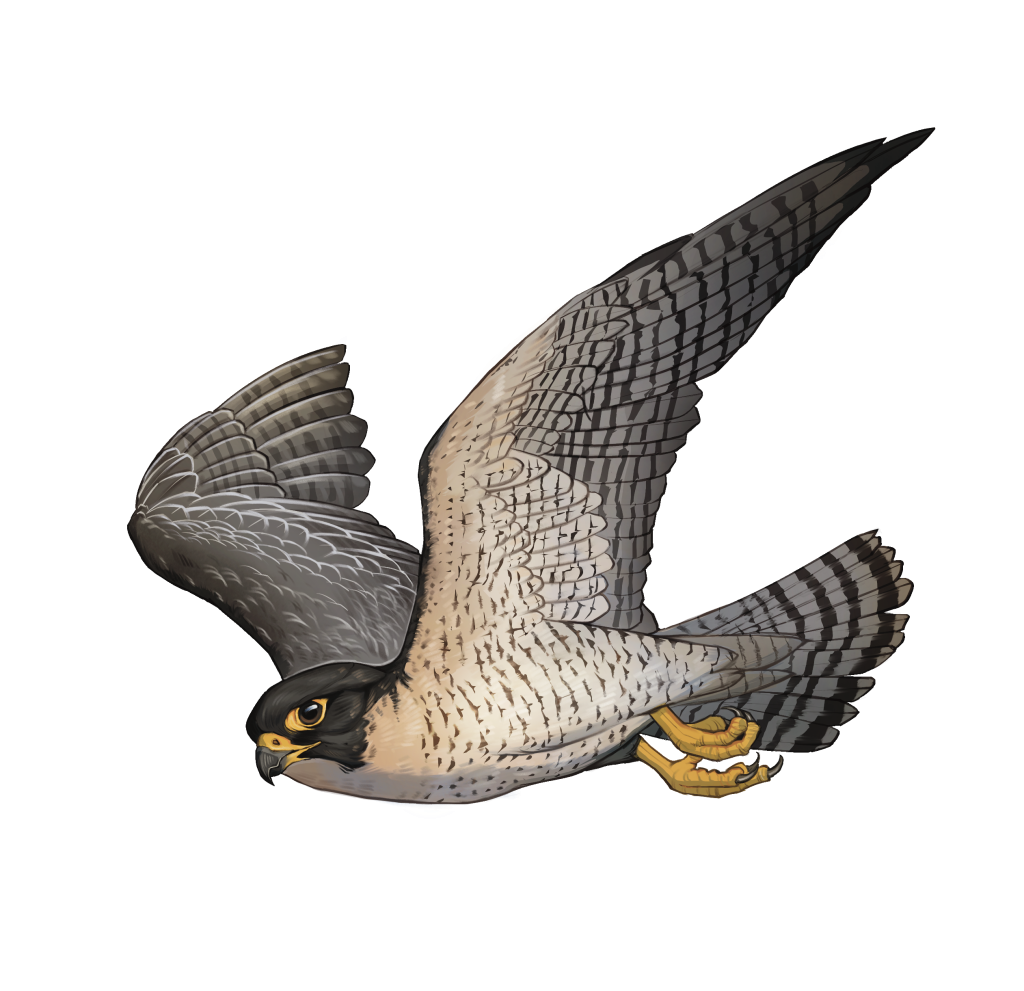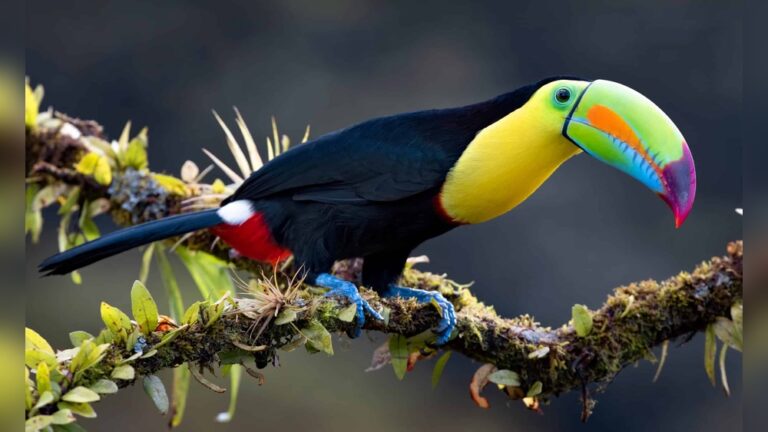Who Is Faster Hummingbird Or Peregrine Falcon
Have you ever wondered which bird zooms through the sky faster: the tiny hummingbird or the fierce peregrine falcon? Both are incredible flyers, but their speed differences might surprise you.
If you think size means speed, think again. You’ll discover fascinating facts that challenge what you thought you knew about these amazing birds. Ready to find out who truly rules the air when it comes to speed? Keep reading—you won’t want to miss this!

Credit: environmentamericas.org
Speed Of Hummingbirds
Hummingbirds are tiny birds known for their amazing flying skills. Their speed surprises many because of their small size. They can hover, fly backward, and change direction quickly. These unique abilities make hummingbirds fascinating to watch. Understanding their speed requires looking at how they fly, their fastest speeds, and what affects their pace.
Flight Mechanics
Hummingbirds flap their wings in a figure-eight pattern. This motion creates lift on both the upstroke and downstroke. Their strong chest muscles power these rapid wing beats. They can flap up to 80 times per second. This quick movement allows them to hover in place. It also helps them move forward, backward, or sideways with ease.
Top Speed Records
Hummingbirds can reach speeds of about 30 miles per hour. During courtship dives, some species exceed this speed. The male Anna’s hummingbird can dive at 60 miles per hour. These bursts of speed are short and very impressive. Still, their usual flight speed is much slower than a falcon’s.
Factors Affecting Speed
Several factors affect how fast hummingbirds fly. Wind conditions can either help or slow them down. The bird’s size and weight also play a role. Energy levels matter since flying fast uses a lot of power. The need to avoid predators or catch food can change their speed. Temperature and air density can influence flight as well.

Credit: environmentamericas.org
Speed Of Peregrine Falcons
The speed of peregrine falcons is one of the most impressive in the bird world. These birds are known for their incredible diving ability. Their speed is not just about flying fast but about how they dive to catch prey. Understanding their speed helps us see how they compare to other fast birds like hummingbirds.
Peregrine falcons use a special way of flying called a stoop. This technique helps them reach very high speeds. Their body shape and wing structure also play a big role in how fast they can go.
Diving Technique
Peregrine falcons dive by folding their wings close to their body. This reduces air resistance and helps them fall faster. They aim straight down or at a sharp angle toward their target. The dive is controlled, and they adjust their wings at the right moment to catch prey.
Maximum Recorded Speeds
Scientists have recorded peregrine falcons reaching speeds over 240 miles per hour. This speed is much faster than any other bird in level flight. The record speed shows why peregrine falcons are considered the fastest animals on Earth during a dive.
Role Of Aerodynamics
The falcon’s body is built for speed. Its streamlined shape cuts through the air efficiently. Smooth feathers reduce drag and help maintain high speed. Aerodynamics allows the bird to control its dive and change direction quickly.
Comparing Flight Speeds
Flight speed is an important way to compare hummingbirds and peregrine falcons. These birds have very different flying styles. Each uses speed in unique ways. Understanding their flight speeds helps us see how they survive and hunt.
Straight Flight Vs Dive
Hummingbirds fly straight at speeds around 25 miles per hour. They flap their wings rapidly to hover and move. Peregrine falcons fly straight slower, about 40 to 55 miles per hour. But their real speed shows in dives. Falcons can dive over 200 miles per hour. This makes them the fastest animals in the world during a dive.
Average Speeds
On average, hummingbirds fly between 25 and 30 miles per hour. Their small size and quick wing beats help with agility, not raw speed. Peregrine falcons average about 40 to 60 miles per hour in level flight. Their large wings and strong muscles support faster speeds over longer distances.
Speed In Hunting
Hummingbirds hunt slow-moving insects and sip nectar. They need control more than speed. Peregrine falcons hunt birds in midair. They use high-speed dives to catch prey quickly. The falcon’s speed gives it an advantage in surprise attacks. Speed is a key tool for the falcon’s hunting success.

Credit: www.mentalfloss.com
Adaptations For Speed
Speed in animals depends on many special traits. Both hummingbirds and peregrine falcons have unique traits that help them fly fast. These traits come from their bodies and how they use energy. Understanding these traits shows why each bird is fast in different ways.
Physical Features
The peregrine falcon has long, pointed wings. These wings cut through the air with little resistance. Its body is slim and strong. This shape helps it dive at great speeds. The hummingbird has short wings but can flap them very fast. Its small size makes it quick and agile. Both birds have sharp eyes to guide their flight.
Muscle Structure
Peregrine falcons have strong flight muscles. These muscles allow powerful wing beats for fast dives. Their muscles store energy for sudden bursts of speed. Hummingbirds have special muscles for rapid wing movement. These muscles let them hover and change direction quickly. Both birds rely on their muscles to maintain speed and control.
Energy Efficiency
Peregrine falcons use energy in short bursts during hunting dives. They conserve energy while gliding in the air. Hummingbirds burn a lot of energy to flap wings fast. They feed often on nectar to keep their energy high. Both birds have ways to use energy well to stay fast and alert.
Impact Of Environment
The environment plays a big role in how fast a hummingbird or peregrine falcon can fly. Different surroundings can change their speed and movement. This section looks at how altitude, weather, and habitat affect these birds’ flying abilities.
Altitude Effects
Higher altitudes have thinner air. Thin air means less air resistance. Peregrine falcons can dive faster in thin air. Hummingbirds may find it harder to flap wings quickly. Their tiny muscles need more oxygen. Lower altitudes give hummingbirds more power. Both birds adjust their flying to altitude.
Weather Conditions
Wind can help or slow birds. Peregrine falcons use strong winds to dive faster. Hummingbirds prefer calm weather for quick movements. Rain and cold make flying harder. Wet feathers add weight. Cold air slows muscles. Both birds fly best in clear, warm weather.
Habitat Influence
Open spaces help peregrine falcons reach high speeds. Tall cliffs and wide skies suit their hunting style. Hummingbirds live near flowers and trees. They need space to hover and dart quickly. Dense forests can slow peregrine falcons. Hummingbirds thrive in diverse plant areas. Habitat shapes how each bird flies fast.
Records And Myths
Speed records often spark curiosity and myths. The hummingbird and peregrine falcon are two birds famous for their speed. Each has unique flying abilities. People often mix facts with fiction about which is faster. Understanding these records and myths helps clear confusion.
Common Misconceptions
Many believe hummingbirds are the fastest birds. They flap wings rapidly and hover with ease. This gives an illusion of extreme speed. Peregrine falcons dive from great heights very fast. Some confuse hovering speed with diving speed. Others think small size means faster flying. These ideas create common misunderstandings about speed.
Scientific Measurements
Scientists measure bird speed using radar and cameras. Peregrine falcons reach speeds over 200 miles per hour in dives. Hummingbirds fly around 30 miles per hour in normal flight. Speed tests separate normal flying from special moves. Measurements show falcons are faster in a dive. Hummingbirds excel in quick, agile movements.
Famous Speed Claims
Stories about peregrine falcons reaching 240 miles per hour exist. These numbers often come from old or exaggerated reports. Hummingbirds have claims of hovering speeds that seem very high. Most claims lack strong scientific proof. Verified data supports the peregrine falcon as the fastest dive bird. These famous claims feed myths rather than facts.
How Smart Pets Lover Can Help You with Who Is Faster Hummingbird Or Peregrine Falcon
Exploring Speed and Adaptations: A Learning Opportunity for Bird Lovers
Understanding who is faster—the hummingbird or the peregrine falcon—opens up a fascinating window into the incredible adaptations that make these birds unique. As we’ve discussed, the peregrine falcon’s dive speed outpaces the hummingbird’s rapid wingbeats, but both showcase remarkable evolutionary traits tailored to their environments. For pet parents and bird enthusiasts alike, this comparison encourages deeper appreciation of avian biology and behavior.
Practical learning doesn’t stop at curiosity. Observing local birds, noting their flight patterns, and researching how environment shapes their speed can enrich your connection to nature. If you’re caring for pet birds or simply love spotting wild ones, these insights help foster empathy and responsible stewardship—key values at Smart Pets Lover, where every chirp truly tells a story.
For further guidance on bird care or to share your own observations, feel free to reach out via our website’s contact page. Embracing such knowledge empowers you to be a more informed and confident animal lover every day.
Frequently Asked Questions
Which Bird Is Faster, Hummingbird Or Peregrine Falcon?
The peregrine falcon is faster, reaching speeds over 240 mph during dives. Hummingbirds fly much slower, around 30 mph in level flight.
How Fast Can A Peregrine Falcon Dive?
A peregrine falcon can dive at speeds exceeding 240 mph. This makes it the fastest bird and one of the fastest animals on Earth.
What Is The Top Speed Of A Hummingbird In Flight?
Hummingbirds typically fly at speeds around 30 mph. Their agility and hover ability are more notable than their speed.
Why Is The Peregrine Falcon Faster Than A Hummingbird?
The peregrine falcon’s speed is due to its aerodynamic body and powerful muscles. Hummingbirds prioritize agility and hovering over speed.
Conclusion
The peregrine falcon is faster in a dive, reaching over 240 mph. The hummingbird flies quickly too, but only up to about 30 mph. Both birds show amazing speed in different ways. Speed depends on their needs and habitats. Each bird is unique and impressive.
Nature creates many kinds of fast flyers. This comparison helps us appreciate their special skills. Speed is just one part of their story. Both birds inspire wonder in the animal world.







